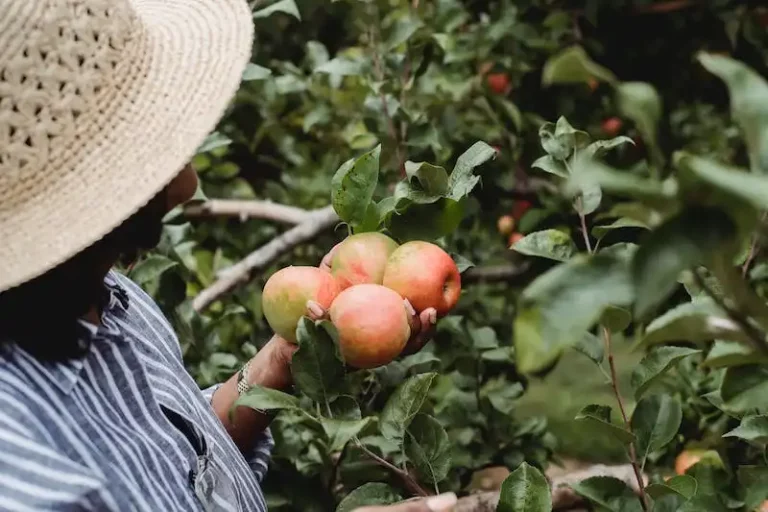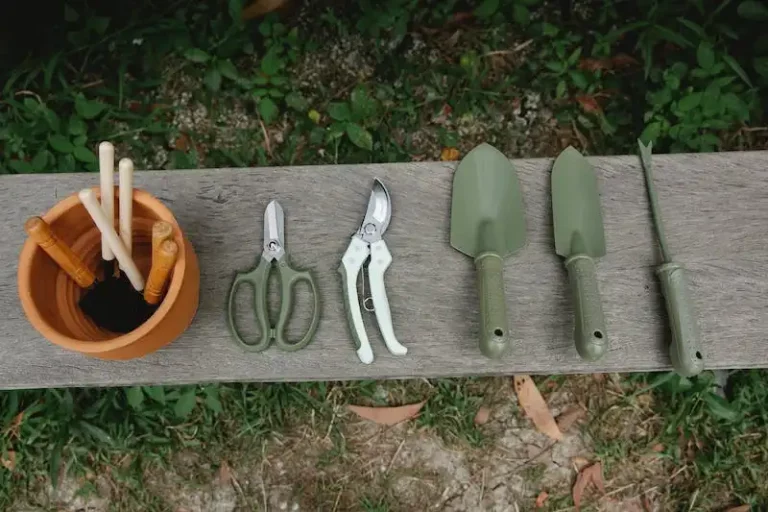Cyclamen plants, also known as indoor cyclamens, are tender flowering houseplants that are popular for their beautiful blooming period. These plants have delicate petals that come in a variety of colors, like pink, purple, red, and white, often showing a contrasting color inside. Being native to the Mediterranean region, cyclamens prefer cool temperatures and thrive in well-drained soil. If you live in a colder area, like Wisconsin, you can still enjoy the beauty of cyclamen plants by growing them indoors. In this article, we will provide an overview of cyclamen plant care, from selecting and planting to fertilizing and maintaining these lovely plants.
When selecting a cyclamen plant, look for those with healthy foliage and plenty of buds. Avoid plants with yellow or dying leaves, as this may indicate poor care or pest infestation. Cyclamens can be grown from seeds, but it is more common to find potted plants available for purchase. You may also choose to divide a mature cyclamen plant for propagation. Plant your cyclamen in a well-drained potting mix, and make sure the pot has enough drainage holes to prevent waterlogging. Adding some bark chippings to the potting mix can help improve drainage.
Cyclamen plants prefer a cool and humid environment, so finding the right spot for them in your home is important. They thrive in indirect light, so placing them near a north or east-facing window is ideal. Avoid placing them in direct sunlight, as this can cause their foliage to burn. Temperature is also an important factor in cyclamen plant care. These plants prefer temperatures around 60°F (15°C), and they can tolerate some fluctuation, but avoid extreme heat or cold. Throughout their blooming period, which can last several weeks, make sure to keep the soil evenly moist by watering thoroughly when the top inch feels dry.
Fertilizing is an important part of cyclamen plant care, as it helps support their growth and blooming. Use a balanced liquid fertilizer diluted to half strength throughout the blooming period, and then reduce to fertilizing once a month during the resting period. Make sure to follow the instructions on the fertilizer package for the correct dosage. As for maintenance, cyclamens generally do not require much pruning. However, if their foliage becomes crowded, you can remove some of the older leaves from the base of the plant to maintain a neat appearance.
Overall, cyclamen plants can be a beautiful addition to your indoor plant collection. With proper care, these delicate flowers can bring color and joy to your home throughout the blooming period. If you have any questions about cyclamen plant care or need more tips, feel free to ask our experts. Happy growing!
How to Grow and Care for Indoor Cyclamen
Indoor cyclamens (Cyclamen persicum) are popular houseplants that can add a touch of color to any room. These charming plants are native to the Mediterranean region and are known for their attractive, colorful flowers and attractive foliage. If you’re considering adding an indoor cyclamen to your collection, you may have some questions about how to properly care for this plant. Here are some basic tips to help you get started.
Light: Indoor cyclamens prefer bright, indirect light. Place your cyclamen near a north or east-facing window where it will receive plenty of light but won’t be exposed to harsh direct sunlight.
Temperature: Indoor cyclamens prefer cooler temperatures between 60-68°F (15-20°C). Avoid placing your cyclamen near drafts or in areas with extreme temperature fluctuations.
Watering: Cyclamens have specific watering needs. They prefer to be watered thoroughly but then allowed to dry out slightly between waterings. Feel the top inch (2.5 cm) of soil, and if it feels dry to the touch, it’s time to water. Be sure to water the soil and avoid wetting the leaves or crown of the plant, as this can lead to rot.
Soil: Cyclamens prefer a well-draining soil mixture. A mix of regular potting soil and perlite or sand can provide the right balance of moisture retention and drainage.
Fertilizer: During the growing season, you can fertilize your cyclamen with a balanced houseplant fertilizer once a month. Follow the instructions on the fertilizer packaging for the correct dilution and application rate.
Repotting: Cyclamens are typically sold as potted plants, but they may need to be repotted after they have finished blooming. Choose a pot that is slightly larger than the current one and fill it with fresh potting soil. Gently remove the plant from its current pot, being careful not to damage the roots. Place the cyclamen in the new pot and fill in with soil, firming it gently around the roots.
Pruning: After the flowers have withered, you can prune back the stems and leaves of the cyclamen to encourage new growth. Leave about half an inch (1.25 cm) of the stem above the tuber to prevent rot.
Dormant Period: Cyclamens have a natural dormant period after blooming. During this time, the leaves will yellow and wither. Reduce watering during the dormant period, allowing the soil to dry out more between waterings. You can keep the plant in a cool, dark place (around 50°F/10°C) until new growth appears.
Hybrids: There are many different hybrids of cyclamens available, offering a wide range of flower colors and patterns. Consider trying different varieties to add variety and interest to your indoor garden!
Ongoing Care: While cyclamens are relatively low-maintenance plants, they do require ongoing care to stay healthy and attractive. Keep an eye on the temperature and light levels in your home to ensure your cyclamen is in an optimal environment. Regularly check the soil moisture and adjust your watering schedule accordingly. Remove any withered leaves or flowers to keep the plant looking tidy.
In conclusion, growing and caring for indoor cyclamens is not too difficult once you understand their basic needs. Provide them with the right light, temperature, and soil conditions, and they will reward you with colorful blooms and beautiful foliage. Follow the tips outlined in this article to ensure your cyclamen thrives in your home.
Indoor Cyclamen Overview
Indoor cyclamen plants, popular in horticulture, are a beautiful addition to any home. These plants prefer a well-drained soil and need to be watered carefully to prevent overwatering.
To care for indoor cyclamen plants, follow these tips:
Light:
Cyclamen plants prefer bright, indirect light. They can tolerate some direct sun, but too much can burn their delicate leaves.
Temperature:
Indoor cyclamen plants do best in temperatures between 60-70 degrees Fahrenheit (15-21 degrees Celsius). They can tolerate cooler temperatures, but avoid extreme heat or cold.
Watering:
Water cyclamen plants thoroughly, then allow the soil to dry slightly before watering again. Overwatering can cause the plants to rot, while underwatering can cause the leaves to wilt and die.
Fertilizer:
Feed cyclamen plants with a balanced, water-soluble fertilizer every two weeks during their active growth period. Avoid fertilizing when the plants are dormant.
Maintenance:
Remove any yellow or dying leaves to encourage new growth. Keep the plants away from drafts and provide a sufficient humidity level to prevent drying out.
Indoor cyclamen plants are often sold as potted plants, but they can also be grown from seed. They come in a variety of colors and some hybrids even have marbled or variegated leaves.
If you have any questions about indoor cyclamen care, feel free to ask your local garden center or consult horticulture articles for the latest tips and advice. With proper care, your indoor cyclamen plants will thrive and bring beauty to your home.
Indoor Cyclamen Growing Tips
Indoor cyclamens are popular houseplants due to their beautiful flowers and attractive foliage. To ensure your indoor cyclamen thrives, follow these tips:
Choose the right soil: Cyclamens prefer well-drained soil, so use a potting mix specifically designed for indoor plants or a mixture of one part peat moss and one part perlite.
Select the right place: Indoor cyclamens need bright but indirect light. Avoid placing them in direct sunlight, as this can cause their leaves to wither and their flowers to fade.
Keep the temperature moderate: Cyclamens thrive in temperatures between 60-68 degrees Fahrenheit (15-20 degrees Celsius). Higher temperatures can cause their foliage and flowers to droop.
Water thoroughly, but don’t overdo it: Cyclamens like to be watered thoroughly, but they don’t like standing in water. Allow the top inch of soil to dry out before watering again. Be careful not to let the soil become too dry or too wet, as this can lead to the plant dying.
Fertilize occasionally: Use a diluted, water-soluble fertilizer every two weeks while the plant is actively growing. During the dormant period, reduce the frequency to once a month.
Provide ongoing care: Remove any withered flowers and yellowing leaves to encourage more blooms. Also, keep an eye out for common pests like aphids and spider mites. If you notice any signs of infestation, treat the plant accordingly.
Repot as needed: If your cyclamen outgrows its pot or the soil becomes compacted, it may need to be repotted. Use a pot that is slightly larger than the current one and provide fresh, well-drained soil.
By following these tips, you can enjoy the beauty of cyclamens as long-lasting houseplants. If you have any more questions or concerns about growing indoor cyclamens, please don’t hesitate to reach out to a horticulture expert for further guidance.




